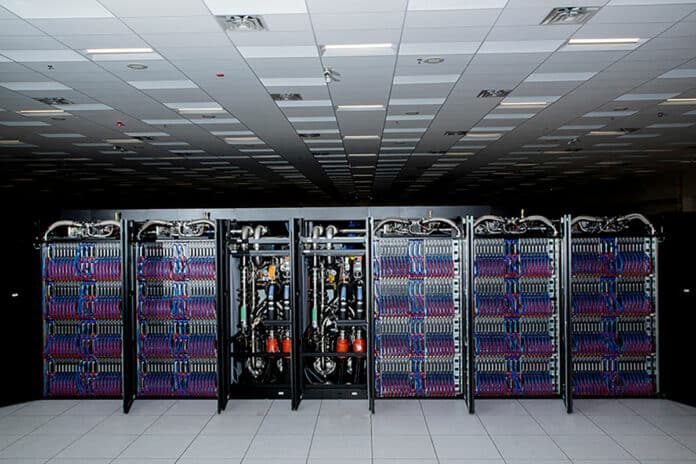In a collaboration that helps advance its national security and basic science missions, Los Alamos National Laboratory with Hewlett Packard Enterprise (HPE) and NVIDIA have come together on the design and installation of Venado, the Lab’s newest supercomputer.
The representatives from the U.S. Department of Energy, the National Nuclear Security Administration, Los Alamos, HPE, and NVIDIA were present at the ribbon-cutting ceremony of Venado, the new HPE Cray EX supercomputer with NVIDIA GH200 Grace Hopper Superchips, at the Laboratory’s Nicholas C. Metropolis Center for Modeling and Simulation.
“Venado adds to our cutting-edge supercomputing that advances national security and basic research, and it will accelerate how we integrate artificial intelligence into meeting those challenges,” said Thom Mason, director of Los Alamos National Laboratory.
Venado incorporates NVIDIA Grace Hopper Superchips that are designed to cater to high-performance computing and giant-scale artificial intelligence applications by combining an Arm-based NVIDIA central processing unit with an NVIDIA Hopper architecture-based graphics processing unit. They offer a significant improvement in terms of cost and power consumption and have demonstrated promising results in early-scale tests for atomistic simulations in materials science and high-resolution astrophysics simulations.
Although it may not be the world’s fastest supercomputer, it’s still impressive that it will be one of the first two supercomputers globally to integrate these Superchips. These chips can execute millions more instructions per second at lower cost and power consumption, which is a significant leap in chip technology.
The implications of this advancement are enormous, as it will allow the ability to solve complex computing problems in minutes that previously took months. This progress is excellent news for science, national and global security.
“Our supercomputing capabilities represent a critical component of how national laboratories tackle important problems,” said David Turk, deputy secretary of the U.S. Department of Energy. “With its ability to incorporate artificial intelligence approaches, we are looking forward to seeing how the Venado system at Los Alamos can deliver new and meaningful results for areas of interest.”
Venado’s computing capacity will be hosting 2,560 direct, liquid-cooled Grace Hopper Superchips in the exascale-class HPE Cray EX supercomputer. It’s also interesting to know that the system will be utilizing 920 NVIDIA Grace CPU Superchips, which will make it the first large-scale system in the US with these chips. The Grace CPU Superchips are powered by 144 Arm cores, which will provide a significant performance boost to various HPC applications.
“As the first U.S. supercomputer powered by NVIDIA Grace Hopper, the Venado system delivers groundbreaking performance and energy efficiency to accelerate scientific discovery,” said Ian Buck, vice president of hyperscale and HPC at NVIDIA. “Through our continued work with Los Alamos and HPE, Venado will be a magnificent scientific instrument for researchers to achieve breakthroughs in materials science, renewable energy, astrophysics, and more.”
The Venado system was built with a focus on performance and efficiency, and that it is networked with HPE Slingshot 11 interconnect to supercharge the performance of the entire system with extremely high-speed networking. Additional HPE Cray supercomputing software improves modeling and simulation workloads, helping researchers make new discoveries by leveraging AI and machine learning to harness insights.
“Powerful supercomputing with AI-driven capabilities will enable researchers to make high-impact breakthroughs and solve real-world problems in this next era of scientific discovery,” said Trish Damkroger, senior vice president and general manager, HPC & AI Infrastructure Solutions at HPE.
“Los Alamos National Laboratory continues to demonstrate cutting-edge research and engineering achievements with industry-leading supercomputing. We are proud of our longstanding relationship with the Lab to build Venado, together with NVIDIA, to deliver innovative AI solutions that will accelerate discoveries and make impactful contributions in fields like materials science and energy research.”
Venado is the result of an extensive co-design process that involves collaboration between various experts such as vendors, computer scientists, system software developers, domain scientists, and applied mathematicians. This approach aims to develop a wide range of computing, memory, and software technologies by making informed decisions about hardware and software components.
